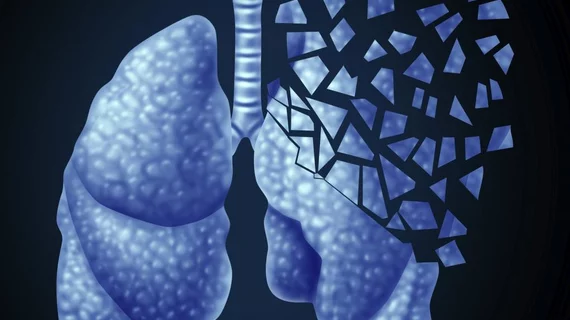Distribution of lung cancer screening programs in US varies considerably
Lung cancer screening programs in the United States have not been distributed properly throughout the country, according to a new study published in Chest.
“In this study, we conducted a cluster analysis to examine the similarity and dissimilarity among the current lung cancer screening facilities across the United States in the context of lung cancer incidence and mortality and socioeconomic environment,” wrote lead author Minal S. Kale, MD, MPH, Icahn School of Medicine at Mount Sinai in New York City, and colleagues. “Identifying variations of geographic regions may inform state- and regional-level policy agencies regarding the allocations of resources to improve lung cancer detection and mortality.”
The American College of Radiology’s Lung Cancer Screening Registry (LCSR) is the only lung cancer screening registry of its kind currently approved by CMS. Kale et al. analyzed the addresses of more than 3,700 facilities participating in the LCSR as of Feb. 26, 2018. Lung cancer incidence rates and the lung cancer-specific mortality rates from 2012 to 2014 were also explored.
For this study, a person was considered a part of the at-risk population if they were current smokers 45 years or older. Overall, the median screening facility had a density of 5 per 100,000 at-risk individuals, but there was significant variability from one state to the next. California had the lowest density of any state (2.1 per 100,000 at-risk individuals) and Utah had the highest (18.3 per 100,000 at-risk individuals). Florida has the most facilities (294) and Washington D.C. had the lowest number of facilities (5).
“Utah also has the lowest lung cancer incidence, the lowest lung cancer mortality rate, and the lowest prevalence for current and former smokers,” the authors added.
The authors found that there were three main “clusters” of states, with 33 states in cluster 1, 12 states in cluster 2 and 6 states in cluster 3.
“In addition to the geographic distribution, these cluster patterns also reveal some underlying differences in lung cancer burden, behavior, preventive factors, and socioeconomic factors that may be of interest to develop targeted lung cancer prevention and control strategies at the national and state level,” the authors wrote. “Overall, states (Alabama, Arkansas, Georgia, Kentucky, Louisiana, Missouri, Mississippi, North Carolina, Oklahoma, South Carolina, Tennessee, and West Virginia) in cluster 2 had the highest lung cancer burden, the lowest current total number of LCSR facilities, and the slowest increase in LCSR facilities between 2016 and 2018.”
The National Cancer Institute has shown “a growing interest in geospatial approaches across the cancer continuum,” the team observed, and they see their findings as a key part of the effort to better understand how a person’s health is impacted by where they live.
“Our study adds to this important research agenda by offering a timely examination of the current landscape of national lung cancer screening services, which similarly shows initial adoption of lung cancer screening technologies in urban centers,” the authors wrote. “The overall increase in lung cancer facilities across the U.S. states is encouraging. However, the growth of lung cancer facilities is not distributed according to lung cancer incidence and mortality.”

